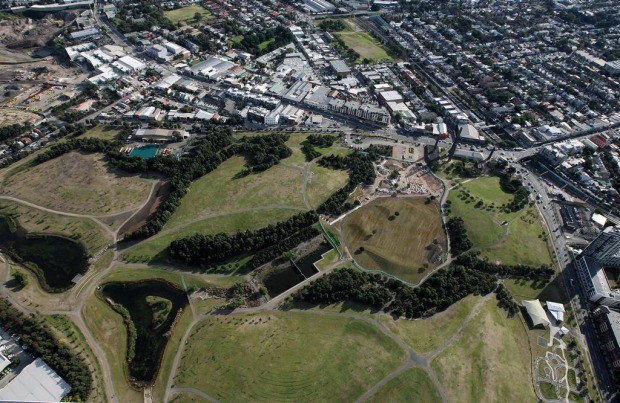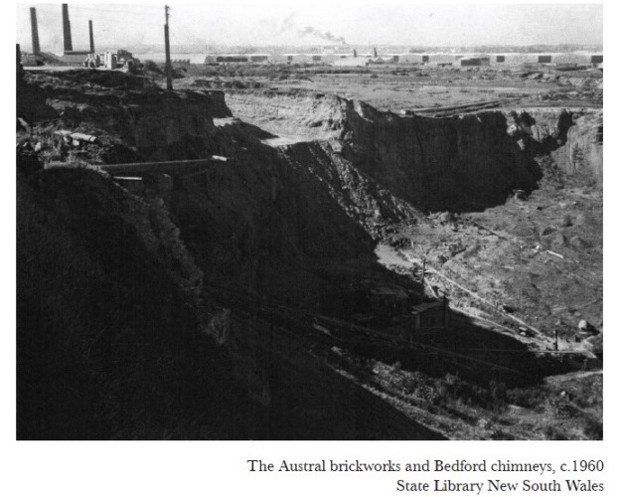Sydney-born Jasper Ludewig was recently awarded the 2014 Royal Institute of British Architects (RIBA) Dissertation Medal.
He completed a Bachelor of Design in Architecture degree with Honours in 2013 at the University of Sydney.
Architecture and Design spoke to Ludewig about why winning the award was a surprise, using the concept of spatial history in his dissertation and where he sees himself in 10 years time.
You recently won the 2014 Royal Institute of British Architects (RIBA) President's Dissertation Medal. What does winning the award mean to you?
It means a lot. It's almost unbelievable – so much so that I still occasionally catch myself on RIBA's website making sure they haven't changed their minds.
Writing a dissertation, especially in the field of architecture, is a very solitary thing to do. The research, the libraries and your preoccupation with your ideas can easily absorb you in a kind of intellectual fog. Once you have finished and are spat out at the other end of 60 000 words, it can be hard to gauge whether what you have written actually makes sense to anyone other than yourself.
On top of that, it's even harder to know if the themes and topics you have covered are of any interest to anyone at all. I was most insecure and anxious about the dissertation just after I had finished it, but took comfort in the thought that apart from my parents, I expected no one else would ever read it.
Receiving such high praise from an international panel of judges therefore came as a great surprise. It's a testament to the dedication and expertise of my supervisor, Ross Anderson, that the dissertation was awarded the President's Medal. I have come to see the distinction as a recognition of the support and effort offered by everyone around me and as a fantastic opportunity that I now have to make the most of.
Can you tell A&D about what your dissertation is about?
The dissertation is titled ‘Made Ground: A Spatial History of Sydney Park’, and focuses on Sydney Park in St Peters as a case study with which to introduce the discipline of ‘spatial history’, a method of historical inquiry developed by the Australian academic and architect, Paul Carter.
Ultimately, the dissertation seeks to develop a way of engaging with, and understanding, the fraught and contested narratives of Australia's multivalent landscapes in which spatial practitioners such as architects, planners, and urban designers intervene.

Sydney Park pictured for the 21 year celebration of its modern upgrade, in 2012. Image: SMH
Why did you decide to focus on that?
The process of researching the dissertation began as an investigation into the history of Sydney Park. I came across the work of Paul Carter, whose texts presented a totally foreign and unique way of thinking about spatiality, historiography and landscape in the context of contemporary Australian society.
I was fascinated by his work and wanted to understand it as best I could, so I dedicated half of my dissertation to studying his writing and his ‘spatial histories’ as closely as possible.
Can you tell A&D about your use of spatial history and why you used it?
Spatial history, as I see it, is less a prescription for a certain methodology and more a term that represents the common ground shared between a series of long-established discourses. What these discourses boil down to is an alternative way of thinking about the architectural ‘site’.
Architectural ‘site analysis’ operates like a biopsy. That is, primarily concerned with material evidence and, more importantly, with the belief that the truth, the facts and their meaning exist independently of the processes that seek to reveal them.
The various types of information that these ‘site analyses’ reveal (although one might more accurately say produce) are strung together as a superficial layer that is draped over the site itself, used by architects to conceptualise and plan, but also to legitimise and validate their design strategies.
In contrast, spatial history advances with the belief that the absolute space of the ruler, the map or the 3D model can only ever be an abstraction, for even if it is a theoretical possibility, upon the moment it is met by experience it becomes relativised, social and historical space. Spatial history is therefore a method of engaging with the many scales at which the events of the past occur, as well as a theory of interpretation.
Sydney Park exists at varying scales simultaneously: in the images of an emerging nation, the maps drafted by its administrators, the narratives upheld by its Indigenous custodians, the multiple disturbances of its geological profiles, and the lives lived either in enjoyment of, or exile from, its landscape.

Screenshot from Made Ground: A Spatial History of Sydney Park, which references how the Sydney Park brick-makers at Bedford Brickworks built the iconic stacks remaining on the site today
What are you currently working on?
At the moment I am preparing to head back to London as I have been asked to present my dissertation at the Royal Gold Medal Crit. On the way back home I am stopping in Nepal for two weeks to work on a sanitation project with HealtHabitat, which I had the pleasure to be a part of this time last year.
I have also started thinking about a next paper to do with landscape theory, Australia and Japan, however the ideas are very much in their infancy and I don't want to jinx them by sharing them too soon!
Where do you see yourself in 10 years time?
I have no real plan to be anywhere in particular. As long as I am able to keep engaging with issues around landscape, design and theory I am confident that all the talented and committed people contributing to this area, in their many different ways, will keep me busy for at least a decade.
I think this is the most exciting part about the entire experience. Rather than fed-up and bored with the texts I was reading and writing about, finishing the dissertation has only cemented my enthusiasm for a type of thinking about Australian spatiality and landscape that, it seems, is interesting to a global audience.

